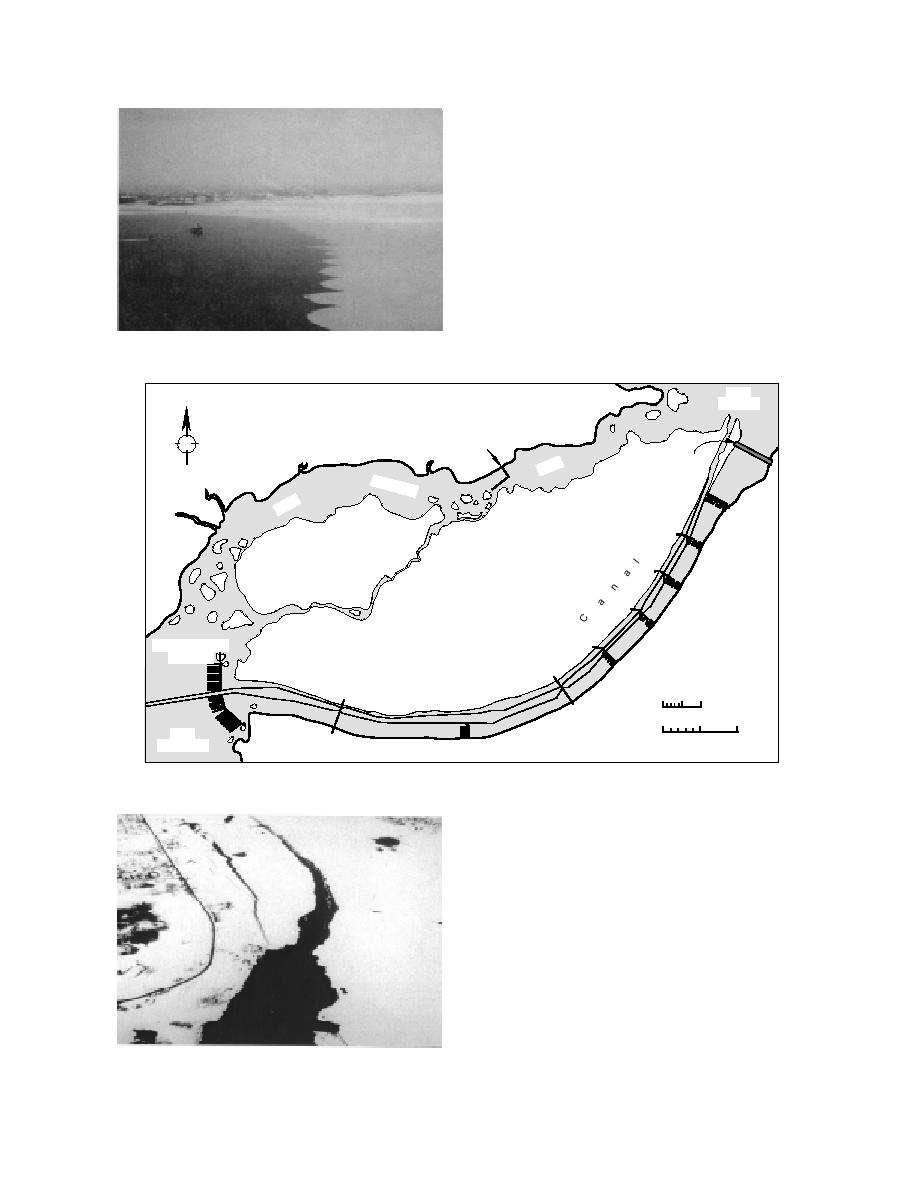
ing and reductions in hydropower production at
the plants at Niagara Falls. The New York Pow-
er Authority and Ontario Hydro, in conjunction
with the Canadian consulting firm Fleet Tech-
nology, are presently researching alternatives
for replacing the 8800-ft-long conventional tim-
ber boom with a more reliable structure. The cir-
cular steel pontoons being tested on Lake St.
Peter are being considered for the Lake Erie
boom (Abdelnour et al. 1994, Crissman 1994).
The Lake St. Francis ice boom, on the St. Law-
rence River in Quebec, prevents wind-driven
lake ice from entering the upstream end of the
Figure 3. Lake Erie ice boom.
Beauharnois Canal during the late winter and
Lake
St. Louis
Cedars
N
Power Dam
Beauharnois
er
Riv
Power Station
Lawr
ence
t
ain
S
Forebay
Boom
Lake St. Francis
s
Ice Boom
i
o
B
n
e
r
a
a
u
h
0
mile
St. Louis
0
10,000 ft
Bridge
Lake
St. Francis
Figure 4. Locations of ice booms on the Beauharnois Canal.
early spring. The 15-mile-long by 3300-ft-wide
canal diverts between 140,000 and 260,000 ft3/s
from the St. Lawrence to the 1600-MW hydro
station at Beauharnois (Fig. 4). The 7800-ft-long
Lake St. Francis boom has a centrally located
navigation opening, allowing for ship passage
during the formation and breakup periods. (The
St. Lawrence is closed to winter navigation
above Montreal.) The opening also allows some
frazil to pass downstream during freeze-up,
hastening the upstream progression of the ice
cover within the canal. The boom units consist
of rectangular steel pontoons. A review of the
available literature and interviews with opera-
Figure 5. St. Marys River ice boom.
tors found no evidence of massive quantities of
5



 Previous Page
Previous Page
